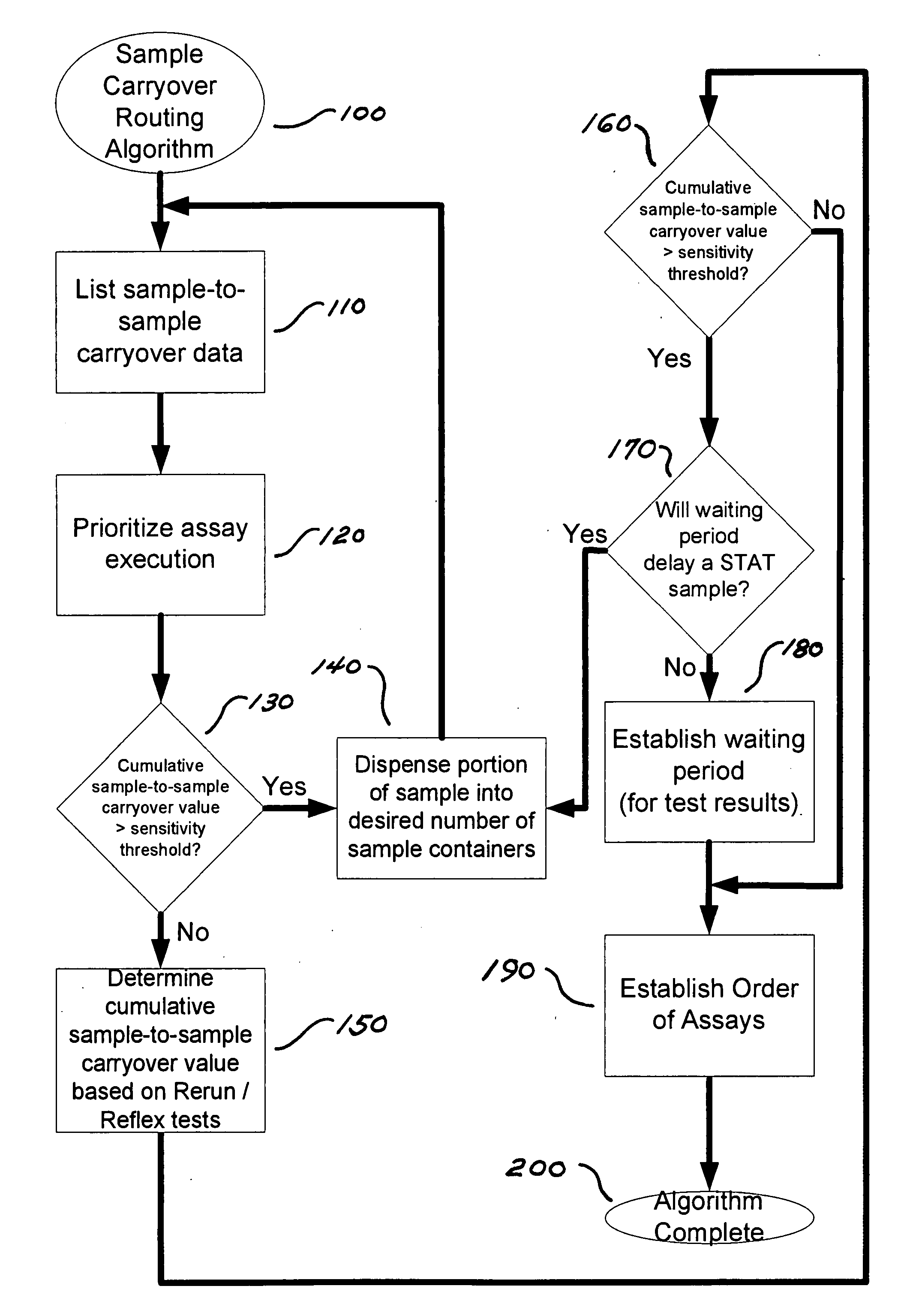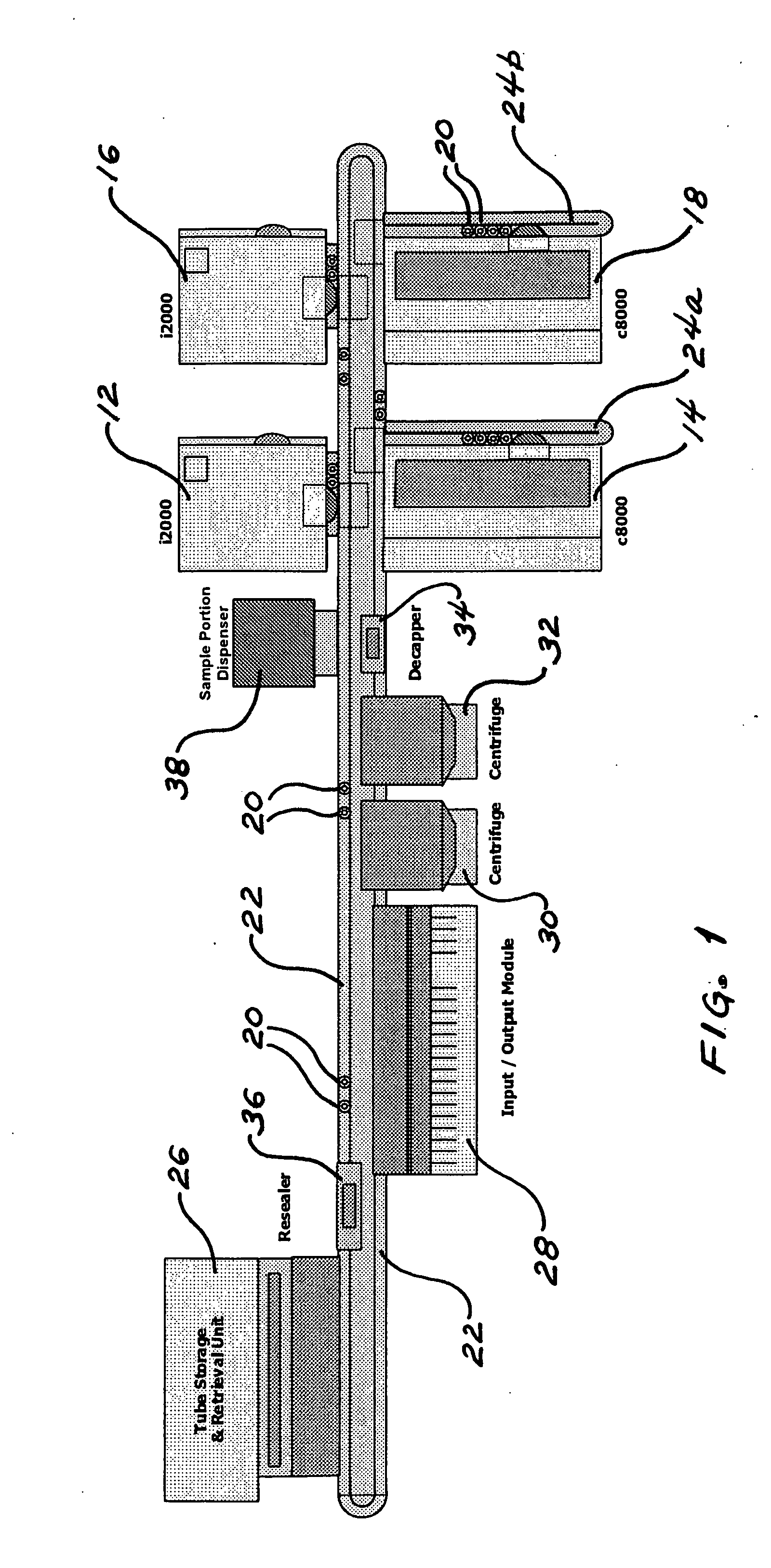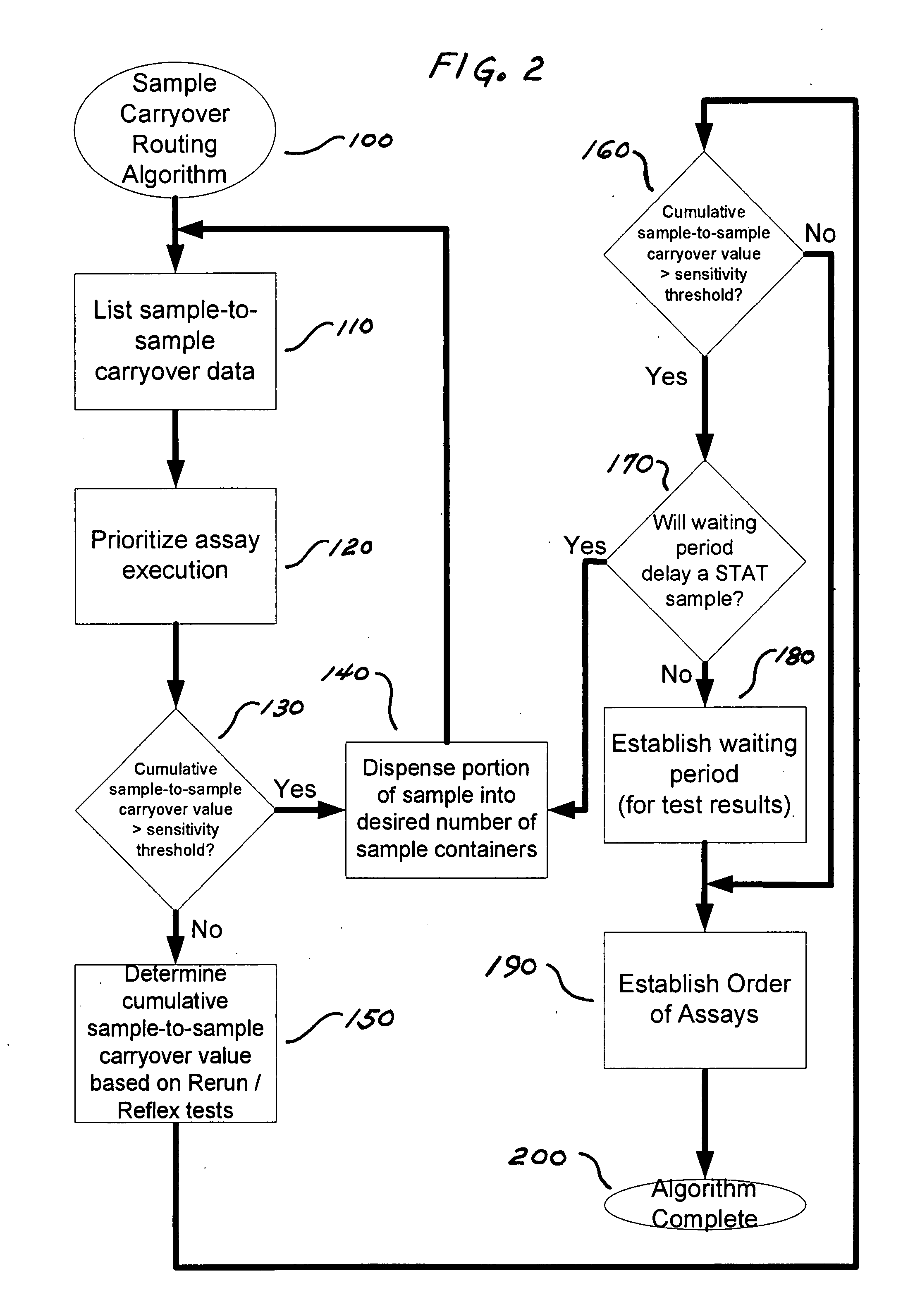Method for determining the order of execution of assays of a sample in a laboratory automation system
a laboratory automation and order of execution technology, applied in the field of sample to sample carryover in an automated clinical analyzer, can solve the problems of adverse effects, sample probes that cannot be completely cleaned, sample probes that have the potential to contaminate samples, etc., and achieve the reduction of the number of operations typically performed with disposable tips on sample probes, and reducing the cost of disposable items.
- Summary
- Abstract
- Description
- Claims
- Application Information
AI Technical Summary
Benefits of technology
Problems solved by technology
Method used
Image
Examples
example
[0062]In this example, the assays to be considered include those set forth in TABLE 6.
TABLE 6Name of assay (Abbreviation ofAssayassay)Architect ® HbsAg: 34-4300 / R2,Hepatitis B surface antigen (HBsAg)Abbott Laboratories, AbbottPark, IL, September 2006Architect ® B12: 34-4080 / R3,Vitamin B12 (B12)Abbott Laboratories, Abbott Park,IL, March 2006Architect ® TSH: 34-3493 / R6,Human thyroid stimulating hormoneAbbott Laboratories, Abbott Park,IL, February 2005(TSH)Architect ® / Aeroset ®Creatine kinase (CK)Creatine Kinase, 30-3938 / R4,Abbott Laboratories, Abbott Park,IL, January 2007Aeroset ® / Architect ®Glucose (Glu)c8000 Glucose; 30-3085 / R3,Abbott Laboratories, Abbott Park,IL, January 2003
[0063]In this example, the clinical analyzers to be considered include those set forth in TABLE 7.
TABLE 7Analyzer (Abbreviation ofanalyzer)1Type of assay performed by analyzer1Architect ® i2000, AbbottImmunoassaysLaboratories, Abbott Park, IL(i2000)Architect ® i2000sr, AbbottImmunoassays (also has STAT sample p...
PUM
| Property | Measurement | Unit |
|---|---|---|
| sensitivity threshold | aaaaa | aaaaa |
| volumes | aaaaa | aaaaa |
| concentration | aaaaa | aaaaa |
Abstract
Description
Claims
Application Information
 Login to View More
Login to View More - R&D
- Intellectual Property
- Life Sciences
- Materials
- Tech Scout
- Unparalleled Data Quality
- Higher Quality Content
- 60% Fewer Hallucinations
Browse by: Latest US Patents, China's latest patents, Technical Efficacy Thesaurus, Application Domain, Technology Topic, Popular Technical Reports.
© 2025 PatSnap. All rights reserved.Legal|Privacy policy|Modern Slavery Act Transparency Statement|Sitemap|About US| Contact US: help@patsnap.com



